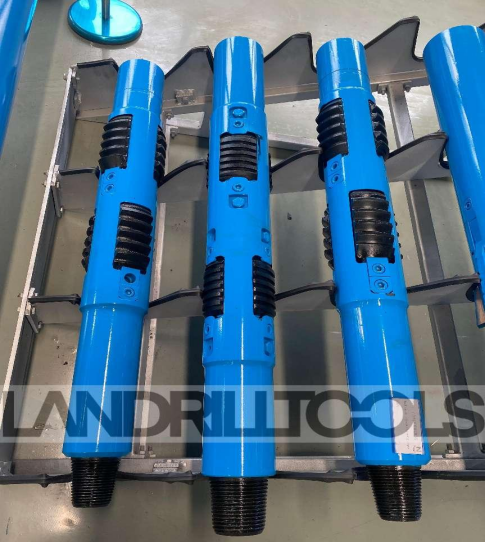- Product Overview
The casing scraper is a downhole tool used in oil and gas well operations, primarily designed to remove cement residues, rust, deposits, or other obstructions from the casing wall. This ensures the smooth execution of subsequent operations such as cementing, perforation, or well completion.

2. Main Types
| Type | Features |
| Mechanical Scraper | Uses spring or hydraulically driven blades, suitable for routine scraping operations at a lower cost. |
| Hydraulic Scraper | Operates via hydraulic pressure to drive the blades, ideal for high-pressure or deep-well environments with adjustable scraping force. |
| Retrievable Scraper | Reusable design, suitable for long well sections, reducing operational costs. |
| Rotary Scraper | Combines with drill string rotation to enhance scraping efficiency, effective for stubborn deposits. |
3. Core Functions
Removes casing wall residues (cement, mud, scale, etc.)
Improves cementing quality (ensures proper bonding between cement and casing)
Reduces completion risks (prevents obstructions during perforation or packer installation)
Extends casing lifespan (minimizes corrosion and wear)
4. Application Scenarios
Pre-cementing scraping (ensures cement bonding quality)
Pre-perforation cleaning (prevents perforation gun clogging)
Workover operations (removes deposits in aging wells)
Horizontal/highly deviated wells (special designs prevent tool sticking)
5. Key Selection Parameters
| Parameter | Considerations |
| Casing Size | Must match wellbore dimensions (e.g., 5-1/2″, 7″, 9-5/8″, etc.). |
| Scraping Force | Select blade material (carbon steel, alloy steel, carbide) based on deposit hardness. |
| Working Pressure/Temperature | For deep or high-temperature wells, choose models resistant to high pressure (10,000+ psi) and high temperature (150°C+). |
| Connection Type | API standard threads (e.g., NC26, NC38) or specialty connections. |
6. Common Issues & Solutions
| Issue | Possible Cause | Solution |
| Poor scraping effect | Worn blades or incorrect selection | Replace with carbide blades or adjust scraping parameters. |
| Tool stuck in well | Complex well trajectory or over-scraping | Use retrievable designs or increase circulation flushing. |
| Thread damage | Improper torque or substandard material | Follow API standards strictly and use high-quality steel. |
Junnie Liu
Mobile/Whatsapp:+0086-158 7765 8727
Email: landrill@landrilltools.com
Post time: Apr-11-2025








 Room 703 Building B, Greenland center, Hi-tech development zone Xi’an, China
Room 703 Building B, Greenland center, Hi-tech development zone Xi’an, China
 86-13609153141
86-13609153141


